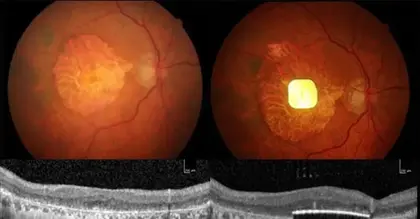Note: This document contains side effect information about natalizumab. Some dosage forms listed on this page may not apply to the brand name Tysabri.
Applies to natalizumab: parenteral concentrate for iv infusion.
Warning
- Increased risk of progressive multifocal leukoencephalopathy (PML), an opportunistic viral infection of the brain; usually leads to death or severe disability.1 13 14 15 16
- Risk factors include duration of therapy (e.g., >2 years), prior use of immunosuppressants, and presence of anti-JC virus (JCV) antibodies.1 When initiating and continuing treatment with natalizumab, consider these risk factors in the context of expected benefit.1
- Because of risk of PML, available only through a restricted distribution program (TOUCH® Prescribing Program).1 2 3
- Monitor patients during therapy for any new signs or symptoms suggestive of PML; immediately withhold the drug at first such sign or symptom.1
- For diagnosis of PML, an evaluation that includes a gadolinium-enhanced MRI brain scan and, when indicated, CSF analysis for JC viral DNA recommended.1
REMS:
FDA approved a REMS for natalizumab to ensure that the benefits outweigh the risks. The REMS may apply to one or more preparations of natalizumab and consists of the following: medication guide, elements to assure safe use, and implementation system. See the FDA REMS page ([Web]). (Also see Restricted Distribution Program under Dosage and Administration.)
Side effects include:
Patients with MS: Headache, fatigue, infusion-related reactions, arthralgia or extremity pain, depression, lower respiratory or urinary tract infections, gastroenteritis, rash, vaginitis, abdominal discomfort, diarrhea.
Patients with Crohn's disease: Headache, fatigue, upper respiratory infection, nausea.
For Healthcare Professionals
Applies to natalizumab: intravenous concentrate.
Ocular
Frequency not reported: Acute retinal necrosis (ARN), blindness, decreased visual acuity, redness, eye pain[Ref]
Nervous system
Very common (10% or more): Headache (38%)
Common (1% to 10%): Vertigo, somnolence, tremor, dizziness
Uncommon (0.1% to 1%): Progressive multifocal leukoencephalopathy (PML)
Frequency not reported: Tremor[Ref]
Respiratory
Very common (10% or more): Upper respiratory tract infection (22%), lower respiratory tract infection (17%)
Common (1% to 10%): Pharyngolaryngeal pain, cough, sinusitis, nasopharyngitis[Ref]
Psychiatric
Very common (10% or more): Depression (19%)[Ref]
Gastrointestinal
Very common (10% or more): Nausea (17%), gastroenteritis (11%), abdominal discomfort (11%), diarrhea (10%)
Common (1% to 10%): Dyspepsia, constipation, flatulence, aphthous stomatitis, tooth infection, tonsillitis
Frequency not reported: Vomiting[Ref]
Immunologic
Very common (10% or more): Influenza-like illness (12%)
Common (1% to 10%): Herpes, tonsillitis, viral infection, immunogenicity[Ref]
Hepatic
Common (1% to 10%): Abnormal liver function test
Postmarketing reports: Serious liver injuries, increased liver enzymes, hyperbilirubinemia[Ref]
Other
Very common (10% or more): Fatigue (27%)
Common (1% to 10%): Tooth infections, toothache, rigors
Frequency not reported: Flushing, feeling cold, pyrexia[Ref]
Local
Frequency not reported: Localized hypersensitivity reactions[Ref]
Genitourinary
Very common (10% or more): Urinary tract infection (21%), vaginitis (10%)
Common (1% to 10%): Irregular menstruation, dysmenorrhea, amenorrhea, ovarian cyst, urinary incontinence, urinary urgency/frequency[Ref]
Musculoskeletal
Very common (10% or more): Arthralgia (19%), pain in extremity (16%), back pain (12%)
Common (1% to 10%): Rigors, muscle cramp, joint swelling[Ref]
Dermatologic
Very common (10% or more): Rash (12%)
Common (1% to 10%): Dermatitis, pruritus, night sweats, dry skin, urticaria[Ref]
Hypersensitivity
Common (1% to 10%): Immediate or delayed hypersensitivity reactions, seasonal allergy
Frequency not reported: anaphylaxis/anaphylactoid reaction[Ref]
Hematologic
Rare (less than 0.1%): Anemia, hemolytic anemia[Ref]
Metabolic
Common (1% to 10%): Weight increased, weight decreased, peripheral edema[Ref]
Cardiovascular
Common (1% to 10%): Chest discomfort[Ref]




